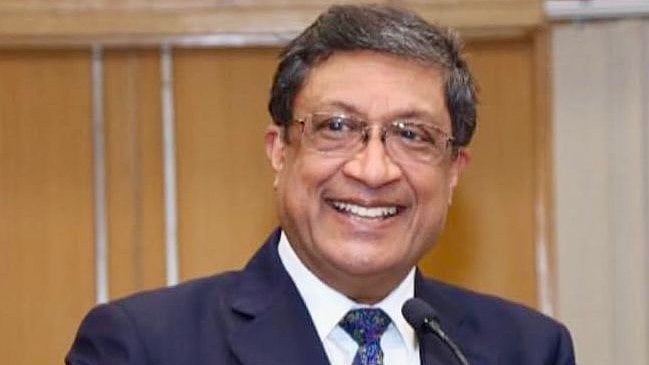
SANJAY BHATTACHARYYA
Credit: Special Arrangement
An Indian Air Force C-130J aircraft landed in Myanmar with relief supplies within 24 hours of the disastrous earthquake that struck the region last week. The assistance to a neighbour was neither unusual nor unexpected; India is acknowledged as a reliable and trusted first responder in humanitarian assistance and disaster relief (HADR). More Indian aircraft and naval ships followed, bringing search and rescue teams, a field hospital, medicines, tents, blankets and supplies of food and equipment to Myanmar.
It has been our civilisational ethos to help those in distress. In recent decades, India has built capacity and shown willingness to provide HADR, not only in the neighbourhood but also in regions far beyond. Today, HADR is also an element of foreign policy and evacuation of citizens is an element of governance. In some ways, this soft power of India also translates to enhanced capability as a net security provider as India engages with partners in responding to non-traditional threats and emerging security scenarios.
The flurry of foreign assistance during the earthquake in Bhuj in 2001 provided relief to those affected. It also informed authorities about the advantages of disaster preparedness, disaster management and disaster response. Our overseas HADR response has evolved through consultations with authorities in affected countries, coordination with relief agencies, development of best practices and prudent budget utilisation.
Typically, the process for HADR is triggered on receipt of information regarding a disaster situation or an impending contingency. Such incidents have increased in frequency due to the adverse effects of natural disasters, climate change and conflict situations. HADR activities are usually classified into three phases: firstly, search and rescue, during which saving lives is a priority, secondly, relief activities for survivors, and thirdly, rehabilitation involving long-term support. India usually engages in the first two phases in overseas HADR missions and has acquired considerable expertise.
Traditionally, the Ministry of External Affairs has extended grants to countries in the neighbourhood or small island states facing a disaster emergency. Over the years, the MEA’s Development Partnership Administration division and the newly established Rapid Response Cell have facilitated quick decision-making for contingency-specific HADR. Today, the crisis management group coordinated by MEA, representing a whole-of-government approach, sometimes under the guidance of the Prime Minister’s Office, decides on the modalities for HADR. Over time, standard operating procedures have been developed based on experience and best practices. Relief pallets of different types containing medicines, tents and blankets, packaged food, and water are kept in stock, ready for dispatch. The National Disaster Relief Force has specialised units for search and rescue, while the armed forces provide field hospital facilities. The SOPs ensure prompt dispatch of appropriately equipped relief missions to address different scenarios, with the assistance of military or civilian logistics, as required.
First Responder
In many disaster situations, the Indian Navy was often the first to reach the affected areas, sometimes within six hours and generally within a day, usually earlier than any other country engaged in HADR. Indian missions following the cyclone in Sri Lanka and the Maldives (2003) and after the huge tsunami in Indonesia and Southeast Asia (2004) provided instant relief to affected populations. The Indian Air Force was pressed into service in response to Typhoon Feria in the Philippines (2005) and Hurricane Katrina in the distant USA (2005). These early missions demonstrated our capability and highlighted the importance of coordination and cooperation, interoperability and standardised procedures. These helped establish mechanisms for disaster preparedness and response.
Since then, India has emerged as a key partner in humanitarian assistance missions with growing expertise that has been appreciated by the authorities and citizens of affected countries. Some of the noteworthy Indian HADR missions include those in response to cyclones in Bangladesh (2007), Myanmar (2008), Fiji (2016), Mozambique (2019), Madagascar (2020); earthquakes in Pakistan (2005), China (2008), Nepal (2015), Turkey (2023); floods and landslide in Sri Lanka (2016); tsunami in Japan (2011), Indonesia (2018); apart from several evacuation missions for Indian citizens from different parts of the world in response to armed conflict or Covid pandemic. The geographical spread and the range of contingencies attended to in India's humanitarian missions are testimony to the skills and contributions of our armed forces and NDRF units, as well as of our diplomats who coordinated such missions.
Net Security Provider
Interestingly, our expertise in dealing with crises developed alongside efforts in addressing non-traditional security threats such as piracy in the Malacca Straits or off the coast of the Horn of Africa or conducting environment protection missions with friendly navies in the South China Sea or the western Indian Ocean. Building cooperation mechanisms, sharing information, developing SOPs, and promoting interoperability were the key to success in many missions, where coordination was necessary with other foreign partners, besides the authorities of affected countries. India has also taken the lead in developing new standards and institutions for disaster-resilient infrastructure.
In these endeavours, India has been successful in forging close connections, particularly in Southeast Asia, West Asia, Africa and with Pacific Island countries. In contrast, China has often pursued activities aimed at unilateral dominance, and its missions in the western Pacific and the Indian Ocean have been of concern to littoral states.
As a corollary to India’s HADR activities, there has been an improvement in trust and cooperation. Regular meetings and exchanges, sharing of information, maritime domain awareness, joint military exercises and developing interoperability have strengthened security cooperation and enhanced India’s position as a net security provider in the region.
The vulnerability of citizens, particularly in developing countries, has been compounded by the ravages and uncertainties brought about by climate change and conflict situations. India’s approach of putting the interests of citizens at the core and extending a helping hand, wherever required, provides a template for harmonious and sustainable development and sets an example for reformed global governance.
(The writer is a former diplomat and currently Professor of Diplomatic Practice at Jindal Global University)